Book: Cyclepedia
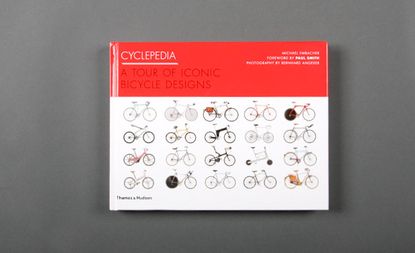
Not just for the bike geek out there with an incumbent need for encyclopaedic knowledge, designer and bicycle collector Michael Embacher's frame-tastic book looks into the weird and wonderful world of bicycles through a charting of 100 models designed over the past 90 years.
Embacher's collection of bikes is fascinating and his concise approach to describing each bike and its virtues, definitely makes it easier to tell your Cinellis apart from your Colnagos.
With a foreword by bike enthusiast Sir Paul Smith, who pays homage to the Gazelle Champion Mondial and its uncanny resemblance to his first bicycle, the carefully curated record of bikes features models that have been chosen for their innovative mechanisms, engineering precision, and commendable design.
Cyclepedia starts off with an essay on brief history of bicycle design, before embarking on its ride through the different types: mountain, racing, single-speed, touring, kids', tandem, urban, folding, cargo, and curiosities - exemplified by the strange but fascinating Capo Elite 'Eis' hybrid, which, with its strange capabilities as part ice skate part bike, allowed the rider to superfluously ride without mishap across a frozen lake (if so desired).
With a refreshing striped down two-wheel-and-frame approach to it all, the book promises to take a closer look at some of the world's greatest design triumphs and rarities, that will have even the most disinterested cynic pouring over the book's pages.

A spread featuring the 1978 reincarnated model of the Sølling Pedersen bicycle...
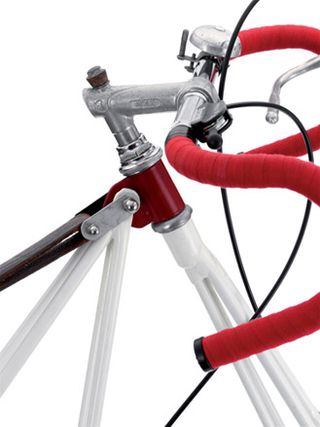
... whose original design was put in place by Mikael Pedersen (1855-1929).

One of the few folding bikes with 28-inch wheels, this fashionable bicycle by Trussardi was produced in a run of 3000 in 1983.

Pictured here is the Cinetica Giotto model number 1010 circa 1990...
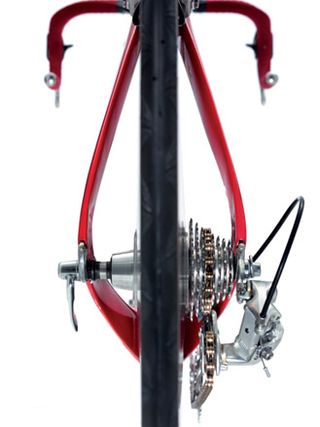
a highly coveted collectors’ bike.
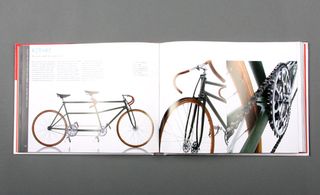
A Köthke model, circa 1948, which Embacher describes as made ’by specialists for specialists’.
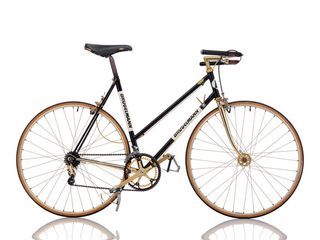
The Colnago Brügelmann (circa 1979) was sold by dealers Manfred and Rolf Brügelmann...

... who brought out this version of the luxurious Colnago model under their own name.

The book also looks at a forward-thinking folding bike its time, the Duemila, circa 1968.
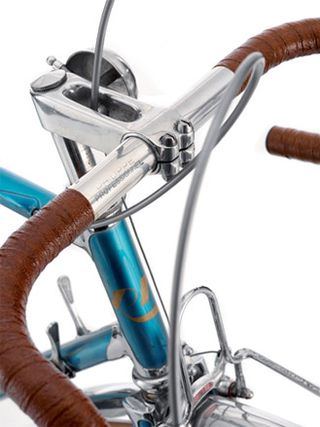
The René Herse Diagonal, which Embacher cites as the 'crème de la crème of touring bikes'.

The René Herse frame shown here is number 6955.

An up-close inspection of the featherweight Mecadural Pélissier, which belonged to the Mecadural series of aluminium bicycles produced by Mercier after World War II.
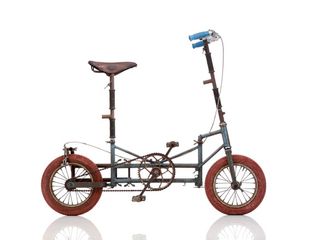
This rather cumbersome bike, nicknamed Inconnu (meaning 'unknown'), is apparently the only one of its kind in existence.
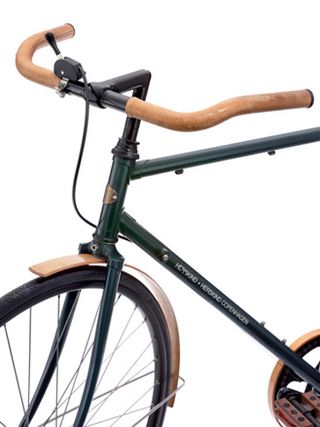
The Copenhagen, circa 1995, by Danish designers Herskind + Herskind.
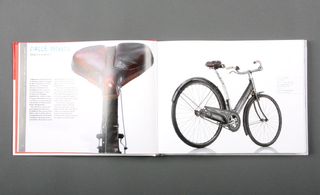
The Vélastic, a 1925 model with adjustable seat height, by the Vialle brothers.

It's hard not to love the unconventional tandem make-up of Tur Meccaica's 1980 Bi Bici bicycle, which actually measures only slightly larger than a single bike.

The Gazelle Champion Mondial road bicycle (circa 1981), apart from its enjoyable riding experience, became renowed for its original Colrout cranks - the crank lever was at least 34 millimetres short of the standard.
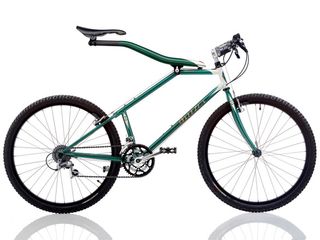
The 1992 Breezer Beamer, a model still manufactured today, was the first mountain bike with complete suspension to win the Downhill World Championships in 1992.
Wallpaper* Newsletter
Receive our daily digest of inspiration, escapism and design stories from around the world direct to your inbox
-
 Fernando Jorge’s fluid diamond earrings show his curve appeal
Fernando Jorge’s fluid diamond earrings show his curve appealDiscover Brazilian jewellery designer Fernando Jorge's snake-like silhouettes and graphic shapes
By Hannah Silver Published
-
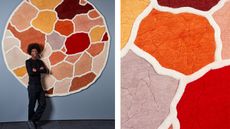 Abreham Brioschi debuts Ethiopia-inspired rugs for Nodus
Abreham Brioschi debuts Ethiopia-inspired rugs for NodusAbreham Brioschi teams up with luxury rug experts Nodus to translate visions from his heritage into a tactile reality
By Ifeoluwa Adedeji Published
-
 Five compact DAB radios that combine broadcast content with visual brio
Five compact DAB radios that combine broadcast content with visual brioThe latest DAB radios – countertop and bedside broadcast companions – for those who like their devices to be standalone and visually simple
By Jonathan Bell Published
-
 René Redzepi, Mette Søberg and Junichi Takahashi on Noma’s new cookbook
René Redzepi, Mette Søberg and Junichi Takahashi on Noma’s new cookbookLifting the lid on Noma’s secrets, a new cookbook celebrates the pioneering restaurant’s season menus, and offers a deep dive behind the scenes
By Jeni Porter Last updated
-
 60-Second Cocktails book shakes up summer happy hour at home
60-Second Cocktails book shakes up summer happy hour at homeThis 60-Second Cocktails book brings summer happy hour into your home with easy but sophisticated cocktail recipes and tips to guide even novice shakers
By Martha Elliott Last updated
-
 New cookbook transforms horror movies into terrifying food art
New cookbook transforms horror movies into terrifying food artHorror Caviar, the first cookbook from A24, features recipes inspired by horror movies, from creatives including Laila Gohar and Chloe Wise, alongside essays by Carmen Maria Machado, Stephanie LaCava, and more
By Mary Cleary Last updated
-
 Edible flowers: the how, the what and the why
Edible flowers: the how, the what and the whyA new book from Monacelli, Edible Flowers: How, Why, and When We Eat Flowers, uncovers a fascinating history
By Hannah Silver Last updated
-
 Match point: learn how to properly pair food and wine
Match point: learn how to properly pair food and wineLearn a thing or two about fine cooking and wine selection with this new book from the London Club
By Melina Keays Last updated
-
 Fragile Self’s multi-platform debut album is a fervent fusion of sound and vision
Fragile Self’s multi-platform debut album is a fervent fusion of sound and visionThe designer behind David Bowie's album covers has released a multimedia album exploring the history of psychology and the definition of ‘normality'
By Harriet Lloyd-Smith Last updated
-
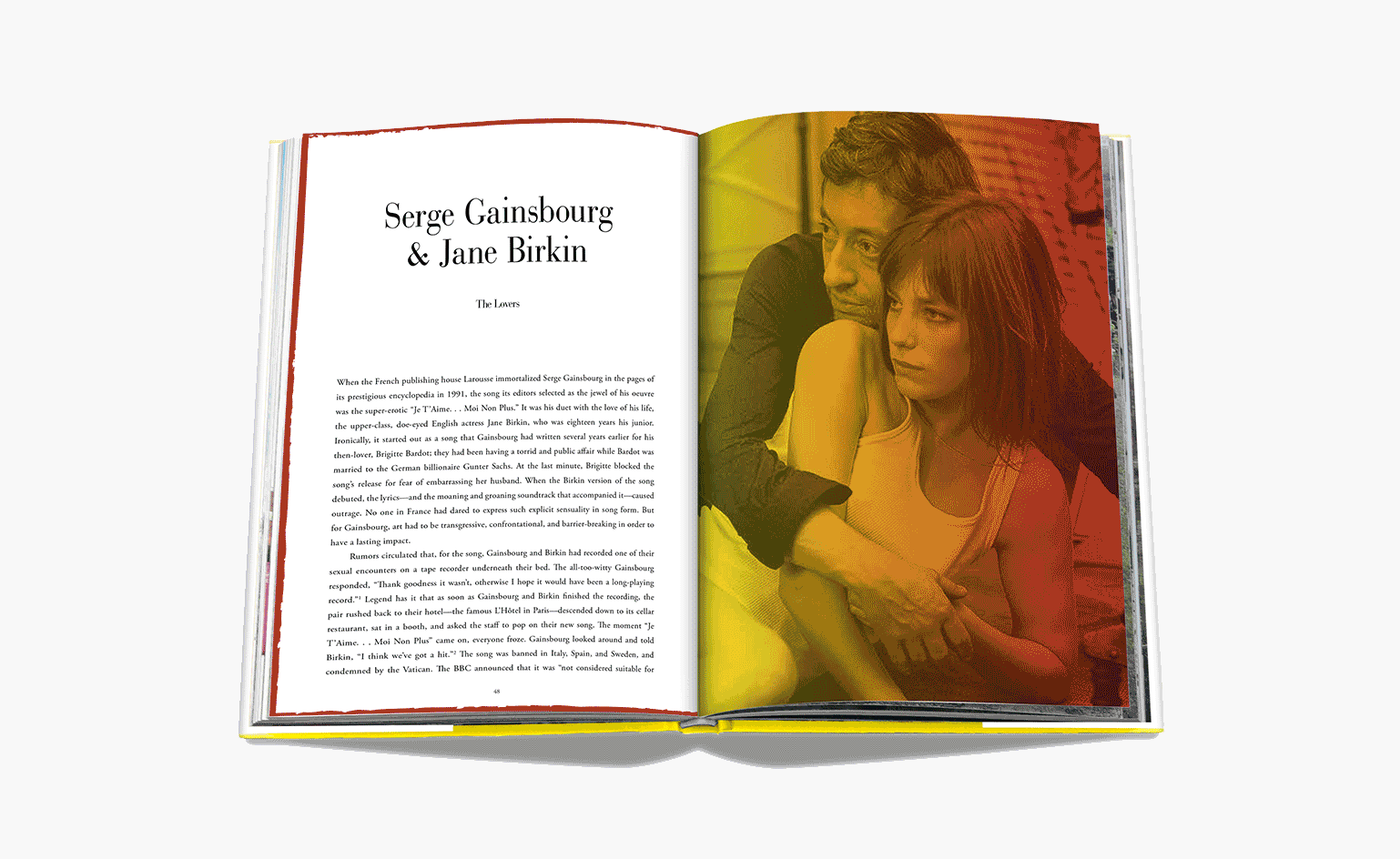 The art of love: creative couples making it work in romance and business
The art of love: creative couples making it work in romance and businessCreative Couples: Collaborations That Changed History explores the unique bond between 15 creative couples
By Katie Meston Last updated
-
 Chic peas: new art cookbook charts a history of hummus
Chic peas: new art cookbook charts a history of hummusOn the Hummus Route traces a utopian track between cities, people, markets and dinner tables. It documents street food in nine Middle Eastern cities, including Cairo, Jerusalem, Gaza, Tel Aviv, Jaffa, and Damascus, and in doing so, offers a fascinating insight into the area's design, food, and culture
By Elly Parsons Last updated